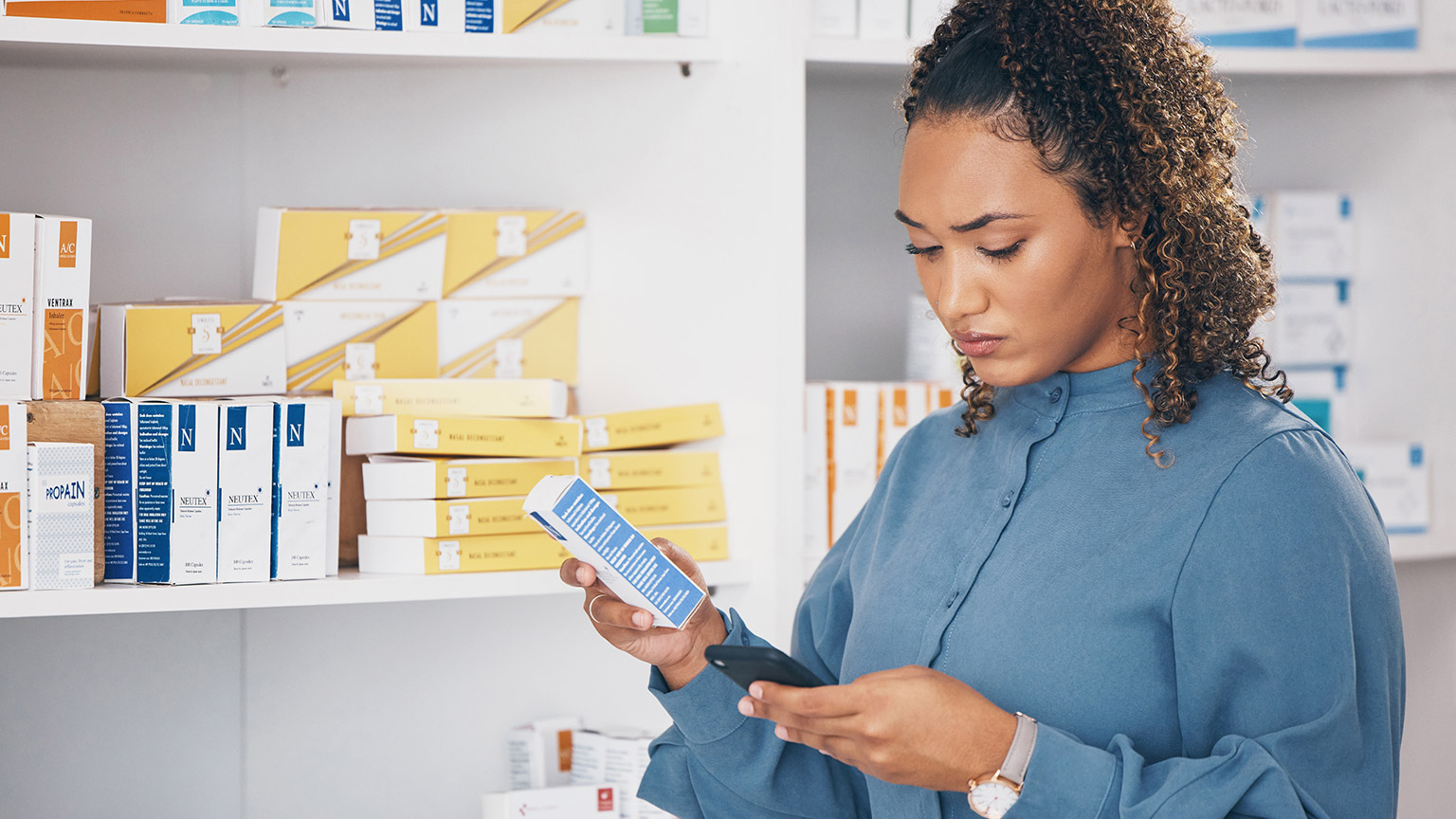Assessment Information
There are three assessments due in this module:
- 01A1 due at the end of Week 23
- 01A2 due at the end of Week 23
- 02A1 due at the end of Week 23 (submit on this module's landing page for this assessment)
All three assessments have work-based practical components. Please read the assessments immediately and arrange a time to discuss the assessment tasks with your supervisor.
An-nyeong-ha-se-yo, hello and welcome to this session of Professional Practice.
In our previous sessions, we explored different communication techniques that pharmacy technicians can use to effectively communicate with pharmacy patients on health-related matters. Effective communication is a core responsibility of all health professionals. It enables the professional to provide patient-centred care that contributes to the health and well-being of the people they interact with.
Health literacy
An important factor to consider when communicating with patients is the health literacy demands placed on them when using a health service. In this session, we will explore health literacy and look at ways to support pharmacy patients’ health literacy.
What is health literacy?
We will examine two readings to get started with your revision of this topic. Take the time to carefully read and think about the information and ideas discussed in the articles. The following learning activity will build upon the insights gained from these readings and get you reflecting on how health literacy relates to pharmacy.
- Understanding Health Literacy: This article comes from the Better Practice Journal (BPJ). It discusses health literacy, why it’s important, and what health professionals can do about it.
- Low Health Literacy: Only one side of the story: This article comes from the New Zealand Medical Association (NZMA. Not to be confused with this tertiary education provider!). It challenges seeing health literacy difficulties as a fault with the patient but rather with the health system and the high demands the system makes on patients and their families. Read pages 14 - 20.
How did you go with that tūmahi (activity)? You will have identified that health literacy is a shared responsibility between health professionals, health organisations and the health care system.
Supporting Health Literacy
With this shared responsibility in mind, let’s look at what pharmacy staff can do to ensure their pharmacy patients are supported and understand the health information that is communicated to them.
In the previous two readings, you will have read the lists of things health professionals can do to support health literacy. In this next reading, you will learn more about methods for supporting health literacy, including a 3-step health literacy model for pharmacies. You may remember this model from your Level 3 learning.
- Background Information About Health Literacy: Booklet from the Health Quality and Safety Commission (HQSC).
Reflecting
There are many resources available to help you learn more about ways to communicate and support pharmacy patients' understanding of health information. Some of the best learning resources come from our own experiences in the pharmacy workplace. Real-life experiences are powerful ways to learn and improve professional practice.
We know that simply having experiences does not mean we will learn and improve. We must reflect on the experiences to gain insights and learning. Therefore, in this next tūmahi, you will be reflecting to learn. You will also be sharing your reflections with your peers and reading their reflections. In this way, we can collaborate and ‘supercharge’ the learning by learning from each other’s experience as well as our own.
Activity
Health literacy reflections
- Reflect on an experience that you had or observed in your workplace where a patient’s health literacy was supported and the health literacy demands on the patient were considered.
- For the situation, describe the following:
- The situation:
- What information was being communicated, e.g. a new medication, health disorder, or treatment plan.
- Who was involved:
- How many patients/ whānau, pharmacy technicians or pharmacy staff (for confidentiality reasons, please do not use real names).
- What actions, behaviours, and methods were used to support the patient's health literacy:
- For example, how were the following used: Universal Precautions, The 3-Step Health Literacy Model, scaffolding, using visual aids, speaking, listening, language and other communication techniques?
- What you learned from the experience that you could apply to your next interaction with patients:
- Things that worked well: For example, useful ways to explain a concept, sharing resources or websites, questions you asked the patient to find out what they know, and how you checked their understanding.
- Things that didn’t work: This could be assuming the patient understands the medical terms you used or not checking if the patient could see or hear you clearly.
- The situation:
Toko Rangatiratanga na te mana-mataurangaKnowledge and power set me free.
This quote is from the Understanding Health Literacy resource. In this context, it illustrates how patients can understand and manage their health best when they are empowered. You can support patients in a mana-enhancing way by providing them with the resources, confidence, and knowledge to reduce health literacy demands.
During our exploration of effective communication, we have looked at a variety of different communication techniques, health literacy and health literacy demands. As a pharmacy technician, you play an important role in ensuring health information is not only available but also easily understandable for all pharmacy patients. By communicating effectively, you reduce health literacy demands and empower your patients to understand and make informed decisions about their own health and well-being.
Self-directed learning activity
This week, review, consolidate and expand your knowledge of health literacy by exploring the resources below, or you may prefer to carry out your own search for reliable and valuable information.
We also recommend that you use your preferred study strategy (or experiment with one that you learned from your peers last week) while reading these links. This will boost your ability to remember the material, enhance your comprehension of health literacy within a pharmacy context, and facilitate the connection of new information with your existing knowledge.
Resources
- Health Literacy NZ - An organisation that supports and provides resources for health literacy.
- Health Literacy - Ministry of Health webpage.
- 3 Steps to Meeting Health Literacy Needs - Brochure from Health Quality and Safety Commission with further information about the 3-Step Health Literacy Model.
- Health Literacy for Health Providers - Healthify webpage with a lot of useful information and links on the topic.
- TEDx Talks
Great work. You have now completed another session of Professional Practice. Feel free to continue to add to your health literacy notes as you continue to progress through the pharmacy programme. Keep building your personal resources for future reference – professionals never stop learning!

Kia ora, in the upcoming lessons, we will concentrate on reinforcing and solidifying your understanding of dispensing through a series of knowledge check 'Challenge Activities'.
Challenge Activities
You'll check your knowledge through self-directed quiz-style learning activities. These activities are designed to help you assess your existing knowledge and pinpoint any knowledge gaps that require attention. It will also help prepare you for progression to Level 5 of the programme.
If you are unsure of any answers, revisit prior sessions and refer to your notes for a refresher. You have access to various resources and the supportive learning community; feel free to use these to enhance your understanding. If you still have unanswered questions or want to discuss any topics further, don't hesitate to chat with your tutor and pharmacy colleagues.
Important
This is not a formal assessment, but you should still put the time and effort into answering all the questions - the more detailed your answers, the more valuable these answers will be as a learning resource for future use. You will also get the most out of this revision time by challenging yourself to give full and complete answers that accurately reflect just how much you have learned so far.
Dispensing Challenge Activity 1
This activity is designed to help you integrate your learning experiences and serve as a self-assessment tool, enabling you to gauge your comfort level with the content you have covered so far.
Instructions
- Download the challenge document and save it to your device. Dispensing Challenge Activity 1.
- The quiz has 23 questions. Take the time to answer them all.
- Seek out the information you need, and if you get stuck, reach out to your online tutor or supervisor.
Self-directed learning activities
This week, there are two activities to complete. You will use your searching skills to become familiar with the names of some medicines that we haven’t yet covered and will then conduct your own research into one of these medicines.
Activity 1
Have some fun and become familiar with the names of these new medicines. Complete ‘The Word Search’ activity online or on paper.
- Online -The Word Search
- Paper - The Word Search
Activity 2
- Choose one of the medicines from the word search.
- For that medicine, research the following:
- The group or type of medicine it is
- What is it used for
- The dose forms available
- The side effects.
Kāre koe i te kanga, you’re great; you’ve completed this session of Introduction to Dispensing.

Vanakkam, welcome to this session on Complementary and Alternative Medicines (CAM). Throughout your programme, we have discussed CAM in general, so you will be aware that pharmacies stock many over-the-counter (OTC) remedies, supplements, and other related products that patients buy to support their health and well-being. You are also aware that it is important that you ask patients if they are taking any CAM so that you can provide the appropriate care and advice.
Complementary and alternative medicines
The terms complementary and alternative mean different things:
| Complementary medicine | Alternative medicine |
|---|---|
|
This type of medicine is used in addition to standard medicines. Example: For nausea relief in cancer patients undergoing chemotherapy (standard treatment), a common complementary medicine approach is the use of ginger. Ginger, often in the form of supplements or tea, is known for its anti-nausea properties and may help alleviate chemotherapy-induced nausea and vomiting. Other complementary therapies like acupuncture or massage may be used to alleviate treatment-related side effects such as fatigue or pain. |
This type of medicine is used instead of standard medicines. Example: Individuals with chronic back pain might use herbal remedies instead of conventional pain medications such as paracetamol or ibuprofen. They may use valerian root, which is thought to help with muscle relaxation for the muscle tension associated with back pain, or turmeric, which contains a compound that has anti-inflammatory properties. Other alternative therapies for back pain may include yoga or massage. |
'Standard medicines'
When we talk about ‘standard medicines’, also known as ‘conventional medicines’, we are referring to the established and widely accepted medications that are approved and meet the standards set out by the regulatory authorities of a specific country to ensure patient safety. It may also be talked about as ‘Western medicine’.
Holistic health
Another term used in healthcare that you will be familiar with is ‘holistic health’. Holistic health refers to an inclusive approach to healthcare that considers the entirety of an individual, encompassing their physical, mental, emotional, social, and spiritual well-being. It acknowledges the interconnectedness of these aspects and emphasises the importance of addressing all dimensions to achieve optimal health and well-being. CAM is a method patients may use to support their holistic health. Many CAM practices align with the principles of holistic health.
Understanding and being aware of Complementary and Alternative Medicine (CAM)
As a pharmacy technician, why is it important to know what CAM your pharmacy patients are taking and have some knowledge of different types of CAM?
Take a moment to consider your answer before reading on.
Understanding and being aware of Complementary and Alternative Medicine (CAM) that pharmacy patients are taking is crucial for pharmacy technicians for several important reasons:
- Preventing drug interactions
- Providing informed recommendations
- Facilitating communication
- Promoting patient-centred care.
Let’s look at each of these reasons in more detail.
Preventing drug interactions
CAM products, including herbal supplements and alternative therapies, can interact with conventional medications, potentially causing adverse effects or reducing the efficacy of prescribed drugs. Being aware of CAM usage allows pharmacy technicians to flag potential interactions and consult with pharmacists to ensure patient safety.
Providing informed recommendations
Pharmacy technicians can offer informed recommendations to patients regarding the appropriate use of CAM products, ensuring they are compatible with their current medications and health conditions. This guidance supports patients in making well-informed decisions about their healthcare.
Facilitating communication
Knowledge of CAM usage encourages effective communication between the pharmacy team, healthcare providers, and patients. This collaboration promotes a holistic approach to patient care, where all aspects of a patient's health, including CAM usage, are considered and supported.
Promoting patient-centred care
Understanding CAM usage allows pharmacy technicians to tailor their approach to patient care, considering the patient's preferences, beliefs, practices and culture related to CAM. This patient-centred approach fosters trust and satisfaction with the pharmacy's services and ensures pharmacy technicians uphold the patient’s health and disability consumer rights.
Activity
CAM
You may already know quite a bit about the different types of CAM from your own beliefs, culture and life experiences. You may also have experience from your time working in the pharmacy workplace.
- Have you encountered any CAM products or practices during your workplace?
- Were these familiar to you?
- Have patients sought advice regarding CAM?
- What names of CAM products and practices are you well-informed about?
By sharing together, you and your fellow ākonga (learners) can collaborate and identify individuals with knowledge in this area that you can ask questions of.
Consider this whakataukī (māori proverb).
![[ADD IMAGE'S ALT TEXT]](/sites/default/files/Midalia.jpg)
This whakataukī talks of collaboration. Each of us has something valuable to contribute to the community for the benefit of all. In our learning community, we each play a crucial role by sharing our knowledge, thoughts, ideas, and support. Through this collaborative effort, we aim to nurture pharmacy technicians, empowering them to offer professional and ethical pharmacy services. Ultimately, our collective endeavours work towards enhancing the health and well-being of the patients we serve.
Herbal Medicines

Herbal medicine is a form of medicine that exclusively uses plants and is the oldest form of medicine on the planet. Herbal medicine is being increasingly validated as modern science seeks to understand the chemistry of medicinal herbs and to confirm their safety and efficacy in clinical trials. It is the forerunner of modern drug medicine, with many chemical drugs based on compounds found in plants. For example, the idea for aspirin came from the salicylates found in willow bark, and heart medicines are still extracted from the foxglove plant.
Drug-herb interactions
All medical agents have potentially unexpected effects, including toxicity and interactions – and herbs are no different. Drug-herb interactions are based on the same pharmacokinetic and pharmacodynamics principles as drug-drug interactions. Therefore, herbal medicines need to be thought of as a medicine so that adverse effects and interactions are considered.
Time to research! Use the following activity to conduct your own research and save your findings as a resource.
Other CAM practices
Other examples of CAM practices include:
- Acupuncture
- Acupressure
- Aromatherapy
- Ayurveda
- Bach Flower Remedies
- Homeopathy
- Massage therapy - many different types
- Naturopathy
- Reflexology
- Reiki
- Rongoā Māori
- Traditional Chinese Medicine (TCM)
- Yoga
Activity
- Choose one of these practices and write a short summary that includes:
- The name and origin
- Underlying philosophy, principles, or approach
- What types of health disorders is it used to treat, if any
- The interventions, care, practices, and treatments involved.
Self-directed learning activity
- Visit the Complementary and alternative medicine Healthify webpage.
- Read the key points and the sections at the bottom of the page.
- As you read, take notes for future reference.
Tino pai, great stuff. You have completed this session. We will continue our discussion on CAM practices in the next learning session.
